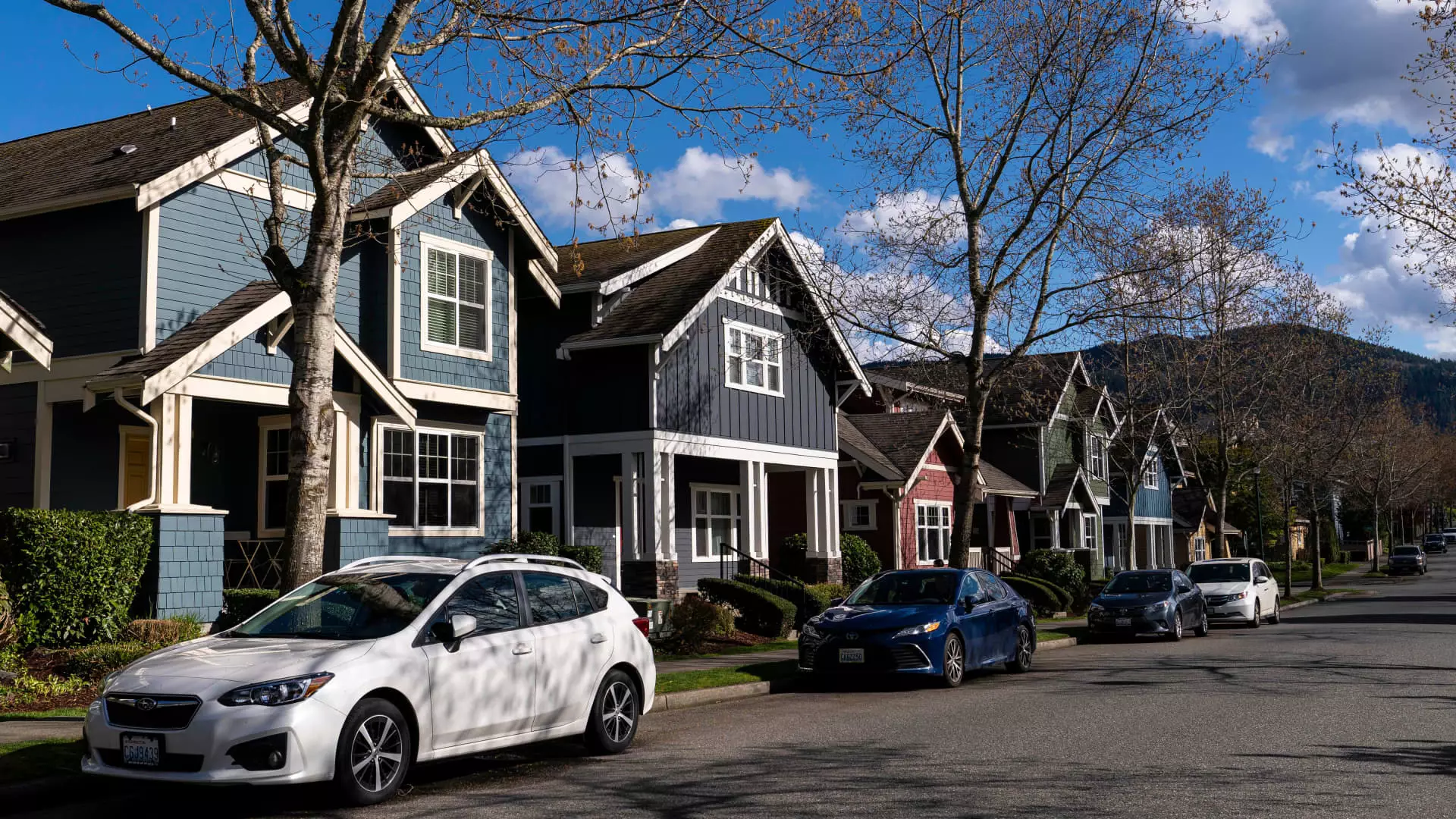The housing market is currently facing a crisis with sales of previously owned homes at a 30-year low. In May, existing home sales remained essentially flat, decreasing by 0.7% from April to a seasonally adjusted, annualized rate of 4.11 million units. This represents a 2.8% decrease from May of the previous year. The sluggish sales pace can be attributed to high mortgage rates and soaring home prices, making it difficult for buyers to enter the market.
One of the major factors influencing the stagnation in the housing market is the rise in mortgage rates. In April, the average rate on a 30-year fixed loan increased from just below 7% to over 7.5%, before settling back slightly in May. Currently, the rate hovers around 7%, making it challenging for potential homebuyers to afford a home. Lawrence Yun, chief economist at the National Association of Realtors, expressed his disappointment in the lack of recovery in home sales, especially during the spring season.
A significant change in the housing market in May was the jump in the inventory of homes for sale, which increased by 6.7% from the previous month and 18.5% from the previous year. Despite the increase in inventory, the supply remains low compared to demand. The current sales pace equates to a 3.7-month supply of homes, indicating the need for more listings to meet the growing demand. As a result of the imbalance between supply and demand, home prices continue to rise, with the median price of an existing home reaching a record-high of $419,300 in May, up 5.8% year over year.
The pricing segmentation in the housing market has also seen significant shifts. Sales of homes priced below $250,000 have decreased from the previous year, while sales in the $250,000 to $500,000 range have seen a marginal increase of just 1%. On the other hand, sales in the higher price brackets, including homes priced between $750,000 and $1 million, as well as those priced over $1 million, have witnessed substantial growth. This trend indicates a growing disparity in the market, with higher-priced homes seeing more activity compared to more affordable options.
Despite the challenges in the housing market, cash transactions continue to dominate, representing 28% of sales. First-time buyers are also persevering, accounting for 31% of all purchases, up from the previous year. However, with two-thirds of homes going under contract in less than a month, competition remains fierce, particularly for well-priced properties that require minimal work. On the other hand, listings that are overpriced or need extensive renovations are sitting on the market for longer periods, highlighting the importance of pricing strategies in the current market environment.
The housing market is facing complex challenges, including stagnant sales, rising mortgage rates, and soaring home prices. As inventory increases and demand remains strong, finding a balance between supply and demand will be crucial to stabilizing the market. Buyers and sellers alike must navigate these challenges carefully to make informed decisions in a rapidly evolving real estate landscape.

